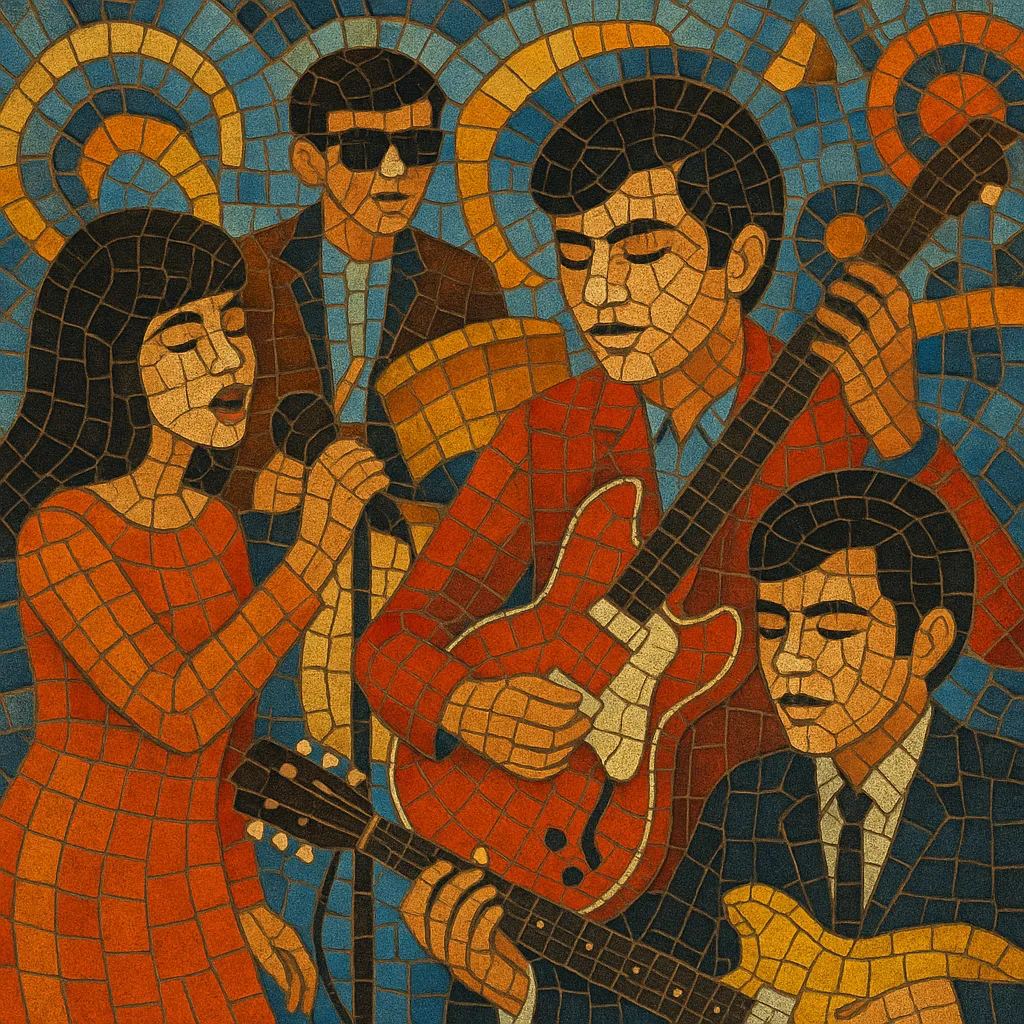Pop yeh-yeh is a Malay-language guitar-band pop style that blossomed in the mid-to-late 1960s, centered in Singapore and spreading across peninsular Malaysia. Its name echoes the "yeah-yeah" chants popularized by The Beatles and the broader British Invasion, and it mirrors the era’s beat, surf, and rock-and-roll aesthetics.
Characterized by chiming electric guitars, Farfisa/vox-style organs, tight backbeats, and buoyant vocal harmonies, the style favors concise, danceable songs with memorable hooks. Lyrics typically revolve around teenage romance, friendship, and youth culture, often delivered with pantun-like quatrains and straightforward, sing-along refrains.
The sonic palette blends Western beat music (Merseybeat, surf, garage) with local melodic sensibilities, creating a bright, upbeat sound—at once modern for its time and distinctly Nusantara in language and attitude.
Pop yeh-yeh emerged in the Malay world at the height of the British Invasion. Singapore—then the regional recording hub with labels like EMI/Parlophone—nurtured a wave of Malay-language youth bands (often called “kugiran,” short for kumpulan gitar rancak). These groups adapted beat music, rock and roll, and surf styles to local tastes, writing original songs and Malay-language covers, and emphasizing clean guitar tones, organ stabs, and vocal harmonies.
The style rapidly gained popularity on radio, in cinema tie-ins, and at dance halls. Songwriters, producers, and arrangers such as Kassim Masdor and lyricists like Yusnor Ef helped codify the sound into concise, radio-ready singles. Landmark artists—A. Rahman Hassan (with Orkes Nirwana), A. Ramlie, Jeffrydin, M. Osman, and others—scored major hits that defined youth culture in both Singapore and Malaysia. The songs typically centered on young love, friendship, and fashionable dances, echoing Merseybeat’s optimism but with distinctly Malay phrasing and cadence.
By the early 1970s, tastes shifted toward soul-inflected pop, cinematic balladry, and later, heavier rock styles. Industry structures moved as well, especially after Singapore–Malaysia political changes, which reoriented recording ecosystems. While pop yeh-yeh’s mainstream prominence waned, many of its musicians transitioned into adjacent pop and rock formats.
Reissue programs, archival compilations, and scholar/DJ interest since the 1990s–2000s revived international awareness of the genre. Its bright guitars, jangly voicings, and Malay-language hooks are now recognized as a Southeast Asian counterpart to 1960s beat and yé-yé movements. The style’s songwriting templates—catchy refrains, tight arrangements, and danceable beats—continued to inform later Malay/Indonesian pop and rock scenes.


